Meghalaya- the wettest state of India, is enriched with green mountains, rivers, valleys, varieties of flora, fauna, and the famous living root bridges. Meghalaya’s most attractive living root bridge is the double-decker root bridge that can be seen at Umshiang near Nongriat village at Cherrapunjee.
The 150-years old human-made natural wonder is not unique but astounding. While there are many single-root bridges in the area, this is the only one with two levels. It is more than 50 meters long with 1.5-meter width.
The Khasi tribe created the living root bridge. They maintain the roots grown from the ancient rubber trees in such a manner that forms the shape of a bridge on the top of the Umshiang river. It takes almost 15 years when a new root ridge becomes strong enough to bear people’s weight.
Let us dive into more details of the double-decker living root bridge in Meghalaya.
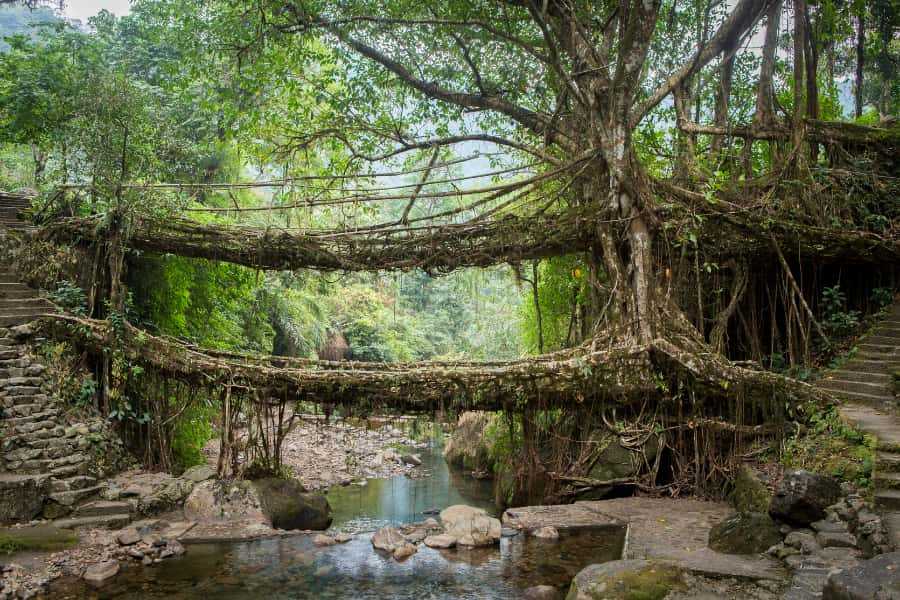
History of Living Root Bridges in Meghalaya
Meghalaya is famous for its living root bridges which exist in Cherrapunjee’s rainforests. A few of them are over 500 years old and attract tourists worldwide.
The Khasi and Jaintia tribes build these bridges which are strong enough to protect themselves from heavy storms and floods. They guide the pliable aerial roots of the Ficus elastica tree (popularly known as rubber tree) across a stream or river to form the living root bridge.
Then the tribes allow the roots to grow and strengthen over time until they can hold the weight of a human being. A mature living root bridge can hold more than 35 people at once.
You can trace most of these living root bridges through the forest. In Meghalaya, an estimated 1000 sq km of forest areas have been preserved as ‘Sacred Groves’ through the ages by the indigenous tribal communities.
As per their indigenous culture, the local tribes are protecting around 125 sacred groves based on their religious beliefs. This tradition promotes environmental conservation which is preserving the rainforests of Meghalaya for hundreds of years. The Mawphlang sacred forest is one such fantastic grove rich with flora and fauna.
In some forests, the local people do not allow to pluck leaves, or branches of plants. The forests are reservoirs of rich biodiversity consisting of many rare, endangered species, including medicinal and aromatic plants.
The Govt. of Meghalaya has taken several initiatives with Meghalaya Tourism to promote nature travelling across these root bridges.
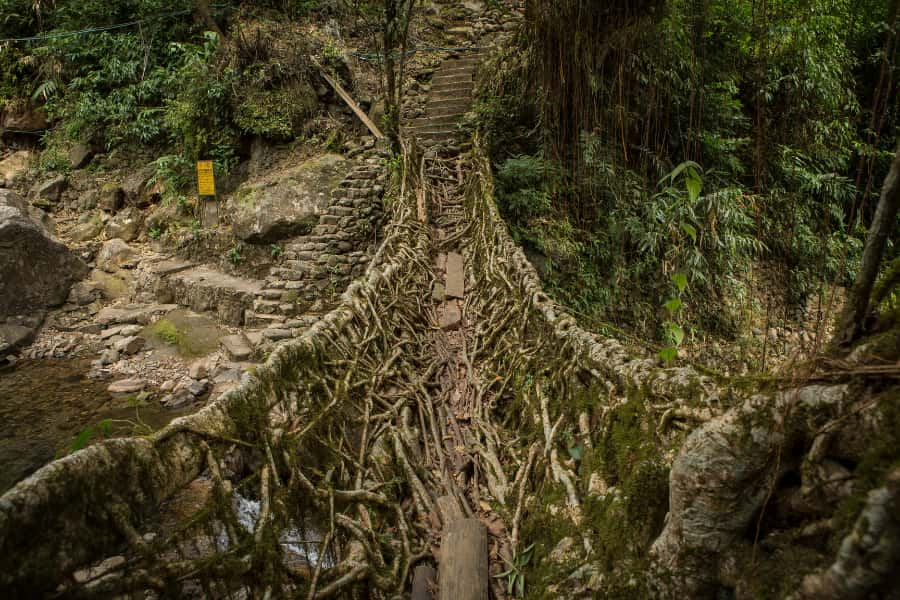
The Biodiversity Around Root Bridges
The rainforest around the double-decker living root bridge is full of rare endemic flora and fauna. Different species of orchids growing wild in the forest surrounding the root bridge. Magnolia and Michelia are flowering plant genus that blooms all around.
If you’re lucky, you can even witness the endangered pitcher plant Nepenthes Khasiana. Also, some ornamental plants like the spotted-leaf Sonerila grow in the forest around the root bridge. There are many medicinal and aromatic plants grown in the forest and harvested sustainably by the local people.
The subtropical forest presents a diverse range of reptiles, including lizards and turtles. Several species of butterflies and moths are living in the forest. Mollusca- the second largest phylum of invertebrate animals, are thriving in moist conditions and are scattered both on land and in the river.
The forest around Umshiang village is home to different endemic and migratory birds. Also, Jungle cats, Marbled cats, barking deer, jackals, and different kinds of mammals are seen in the forest.
How to Reach Double Decker Living Root Bridge?
To reach the double-decker living root bridge, you have to arrive at Cherrapunjee.
If you plan to visit via Guwahati, it takes around 3 hours to reach Shillong (the capital of Meghalaya) by road. From Shillong, it takes a roughly 2 hours drive to cover almost 100 km to reach Cherrapunjee. Then you have to trek from the village Tyrna which is 20 km away from Sohra (Cherrapunjee).
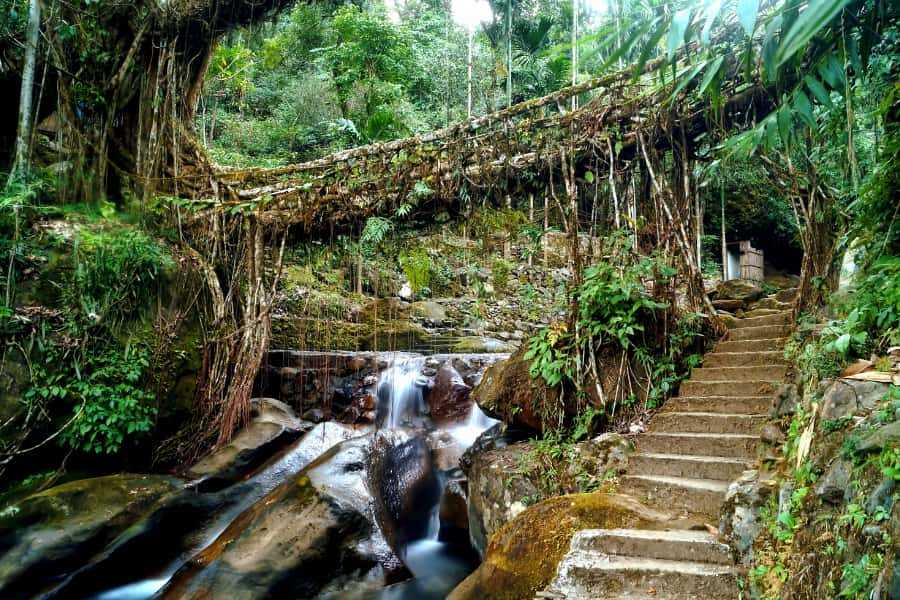
Trekking to Double-Decker Living Root Bridge
There is no other way to visit the double-decker root bridge other than trekking. There are a few thousand stairs uphill and downhill to reach Umshiang.
Where to Start the Trek?
It is better to start the trek as early as the morning to get the most out of it. You must have to be physically fit for this trek. To visit the double-decker root bridge, you need to reach the village of Tyrna.
From the village, the adventurous trek to the double-decker living root bridge begins. You can hire a guide from the starting point, but you can trek yourself by the well-directed cementing path and stairs. To get there you have to go up and down almost 3500 steps.
Also, you have to cross the age-old hanging bridge over the crystal blue Nongriat river towards the natural root bridge. Getting up and down the stairs through the rainforest is a thrilling experience.
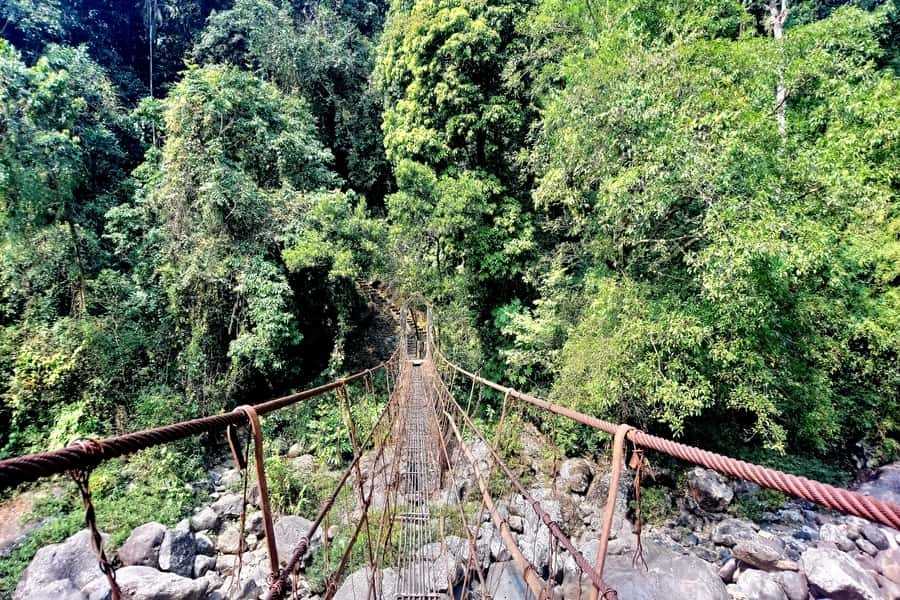
In the forest, you will be amazed to see the beautiful flora and fauna. Different varieties of plants including moss, fern, lichens, etc., cover the lush, dense forest. The fountains, streams, and the chirping of birds add to the beauty of the forest. A camera during trekking can be very handy to keep these moments captured.
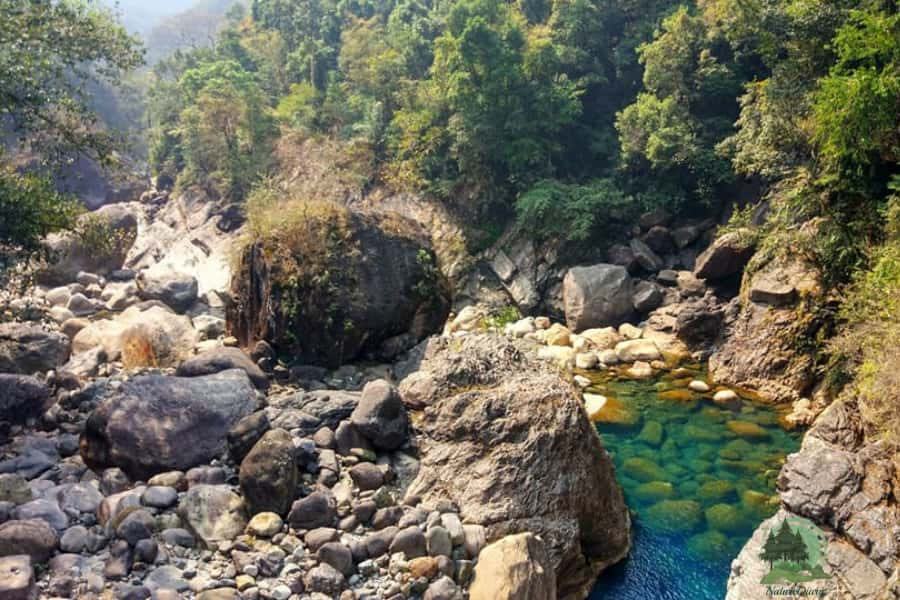
The delicious pineapple from the local villagers can be very pleasing on the way to the trek. There are also some small shops along the trek route from where hunger and thirst can be satisfied.
Visit the Double Decker Root Bridge
After trekking for a few hours (depending on your expertise and speed), when you see the double-decker root bridge, you can get an incomparable experience of the natural beauty. As you dip your feet in the water of the Umshiang river below the root bridge, different small fish go over and nip your feet. All the fatigue of the body is gone by the natural fish pedicure done by the Garra fishes in the stream.
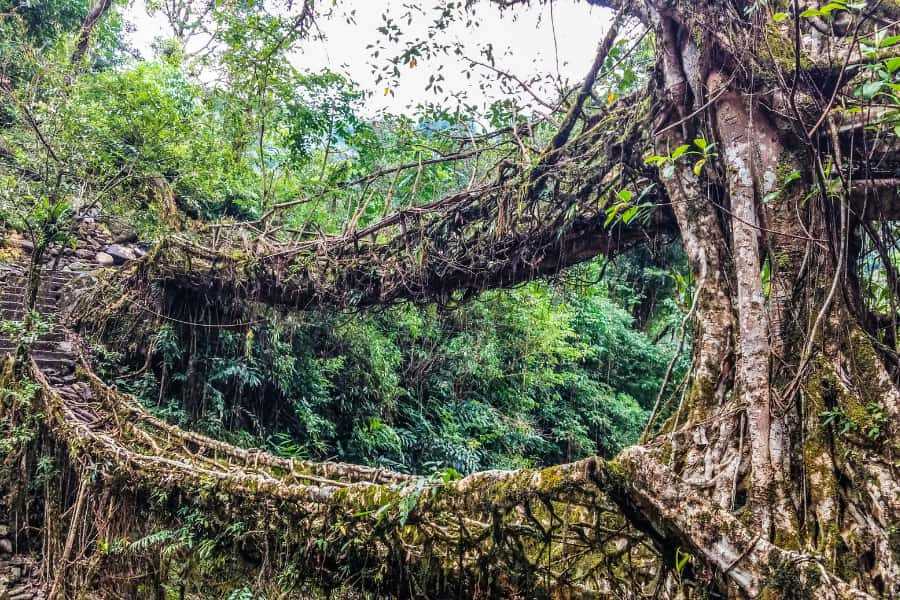
When you walk from one end of the bridge to the other, it gives you a never-before outstanding experience. A lot of time can be spent here, fascinated by the bridge and its beautiful surroundings. After that, you have two options in hand, either you can come back to Tyrna from there or decide to take up the next part of the adventure trek- Rainbow waterfalls.
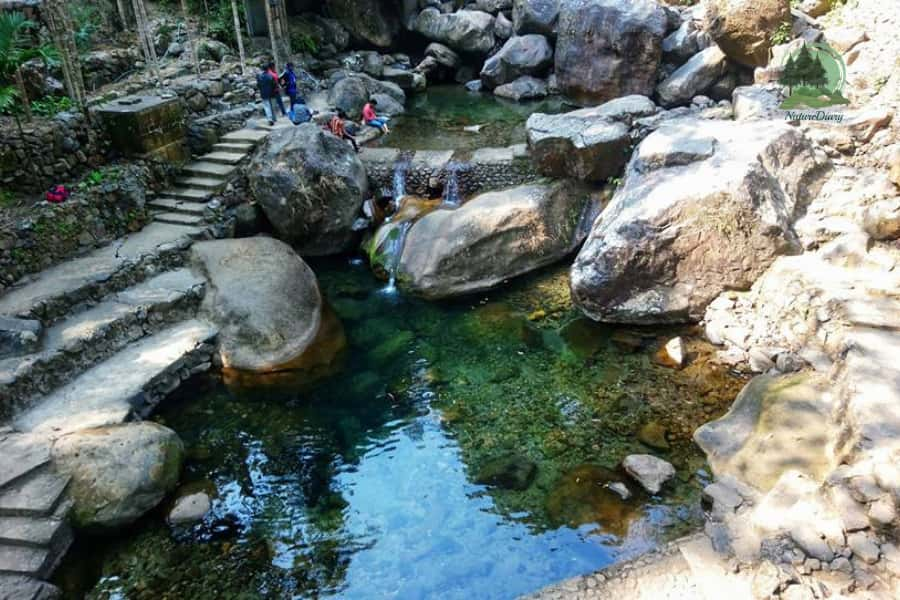
Trek to Rainbow Waterfalls from Root Bridge
The trek to the Rainbow Falls starts from Umshiang. After some ascents and descents, another suspension bridge comes. Another living root bridge follows it. After this point, The stairs give way to hilly trails, and it is a continuous ascent. The sound of the waterfall floats to the ears, but the Rainbow Falls is still half an hour away from there.
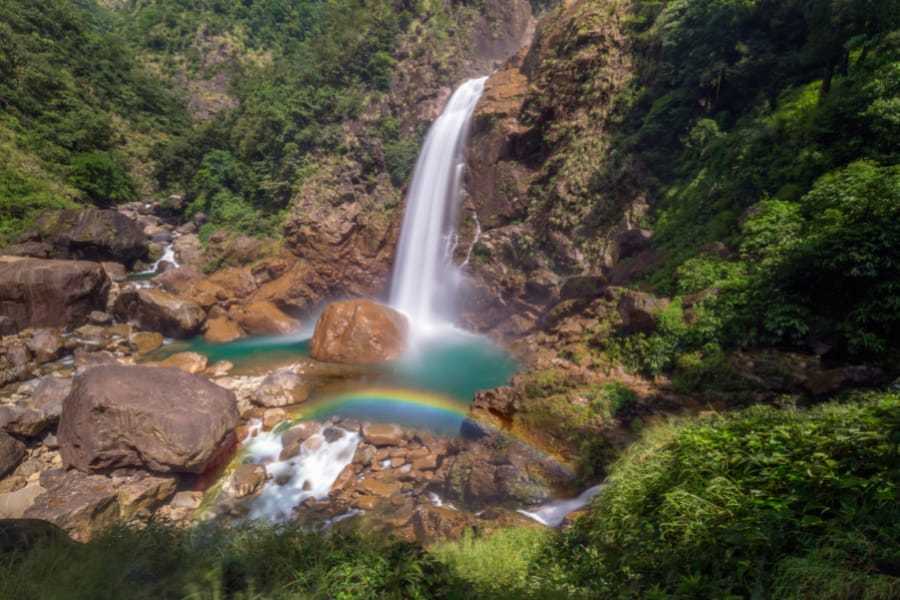
Finally, when you come close to the falls, it is beyond your imagination. When there is sunshine, one can see a rainbow over the falls. One can get rid of all his exhaustion by bathing in the natural swimming pool built under the waterfalls.
The return trek is a bit difficult if you are a beginner. Especially the last stretch, which is the steepest, looked like there are endless stairs. But when you complete the whole journey, you will feel that you have gained a lifetime experience.
Where to Stay Near Double-Decker Root Bridge?
Serene homestay is the best homestay with basic amenities on the trek route. After a 3 km trek, you will reach here. It is surrounded by dense forest. In the middle of the jungle, the homestay provides hot water and tasty food for 24 hours. The rooms and toilets are also neat and clean. If you stay here, then the overall trek will not be so hectic.
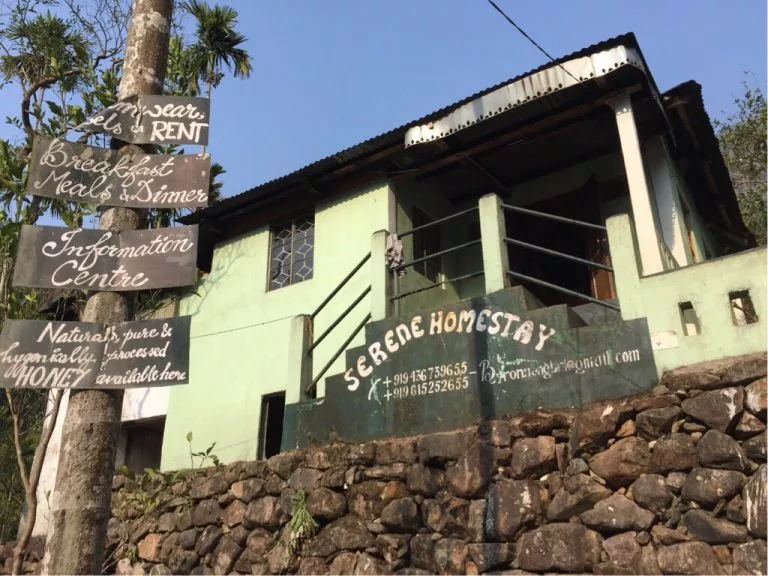
But if you want to be luxurious, you have to choose Polo Orchid Resort, which is almost 10 km away from the village Nongriat.
There are many other resorts with good facilities like Saimika Resort, Jiva Resort, Cherrapunjee Holiday Resort, Abode of Clouds Resort, Royal View Resort, and Smoky Falls Mae Fi resort, in Cherrapunjee. But these are a bit far from Double Decker Living Root Bridge.
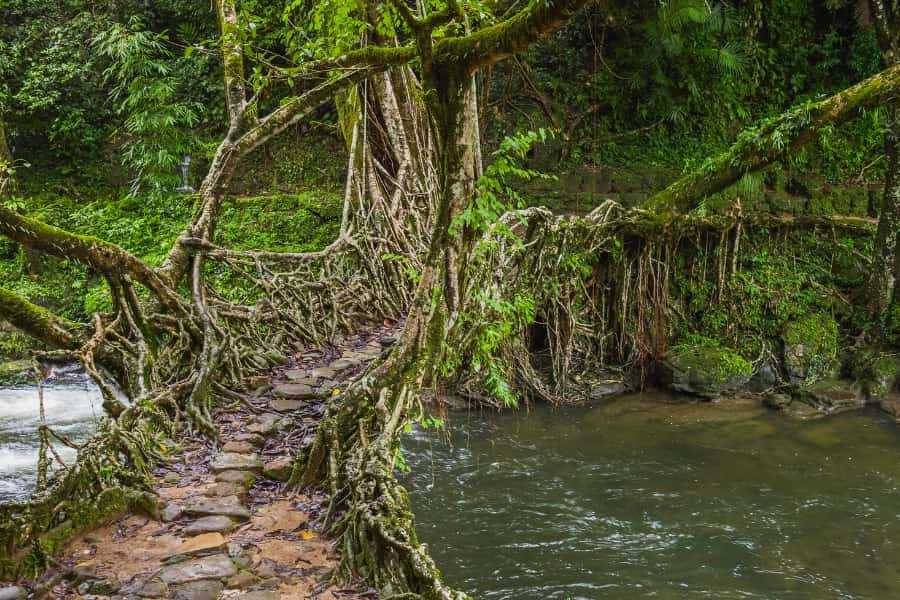
Best Time to Visit Living Root Bridge
The winter season that is November to March, is the best time to explore the double-decker living root bridge. This time the path will not be slippery, and trekking in the cold will also reduce exhaustion. Clear sky and crystal clear water of the stream or river enhance the beauty.
Despite the difficulty, some adventure seekers prefer to trek in the rainy season. In the monsoon time, lush green all around makes the dense forest spectacular. The water level also increases at this time, and thus the waterfalls look more beautiful.
Tips for Double-Decker Root Bridge Trekking
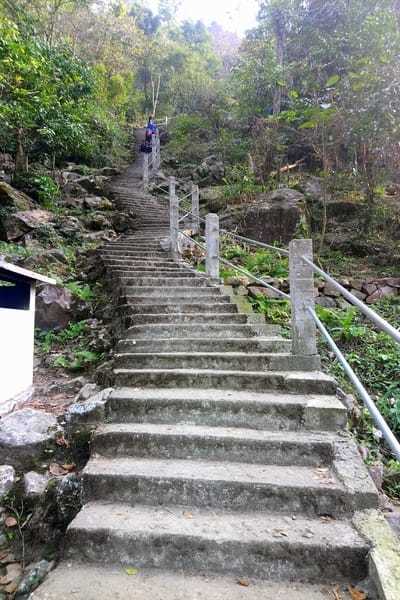
- Start the trek as early as possible. The trek has to end with the sight of daylight. Therefore, it is better to wear light clothing as much as possible during the trek.
- At the beginning of the trek, you will need to get a trekking pole. It will be useful while going up and down the stairs.
- Do not make your bag heavy, but carry enough drinking water while trekking.
- Also, wear a pair of comfortable and waterproof trekking shoes. If you want to trek during the rainy season, you must carry a raincoat and wear a trekking shoe that prevents slippery.
- If you love to watch birds, carry a binocular to satisfy your needs.
- Proper protection is needed during the monsoon trek to avoid leech infestation.
- For a novice, doing the trek with knee caps is suggested, which relieves knee pain.
Meghalaya is truly a paradise with mind-blowing wonders lying around. The natural beauty of this Indian state makes it popular among all travellers including couples, friends, and families. For this reason, Meghalaya is one of the best honeymoon destinations in India. Rich with beautiful flora and fauna, the double-decker living root bridge is a unique creation of the local tribes. Trekking to the root bridge can be a lifetime experience for you. You can also visit Dawki, known for boating on the crystal clear water of the Umngot river, located 96 kilometres away from Nongriat village.